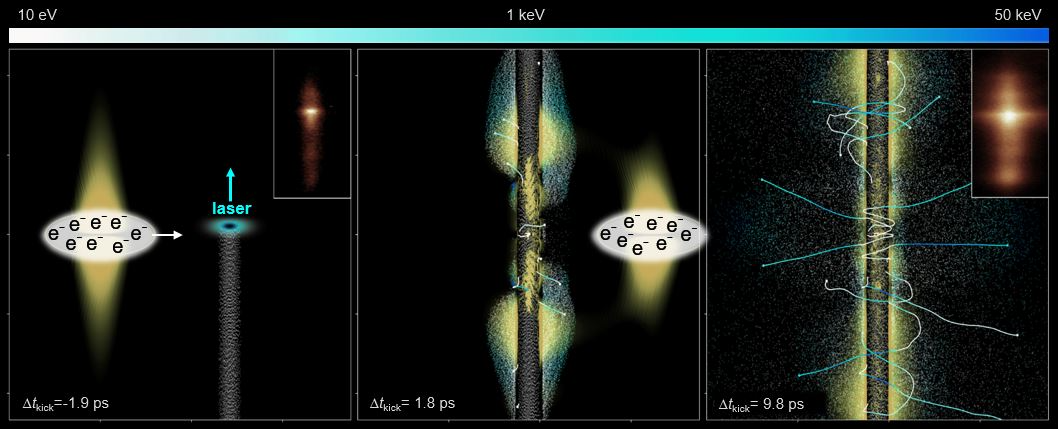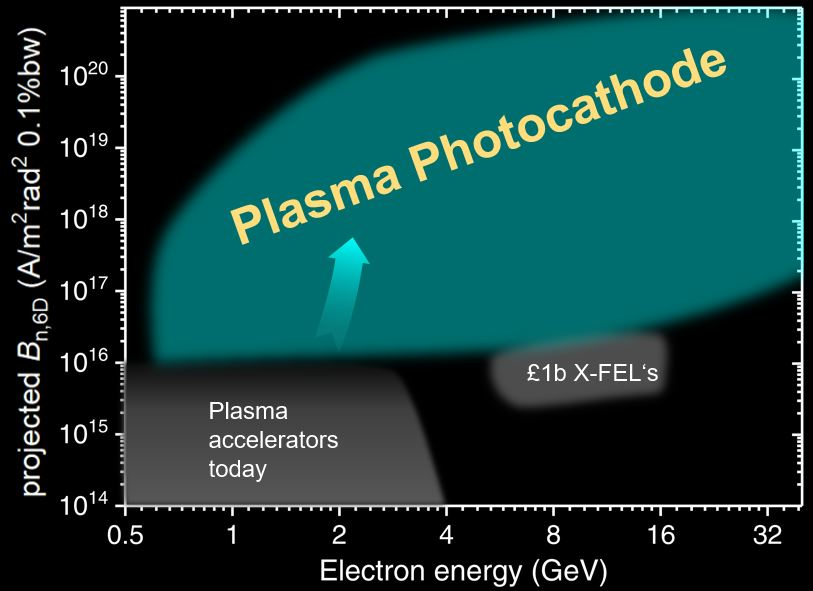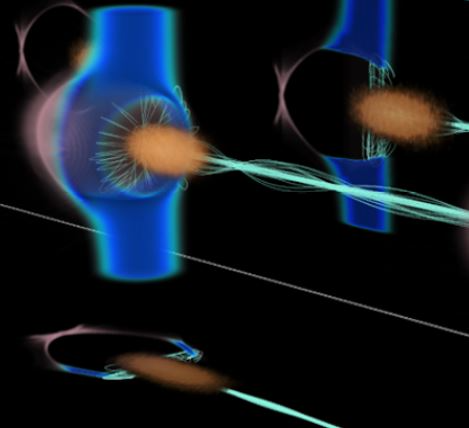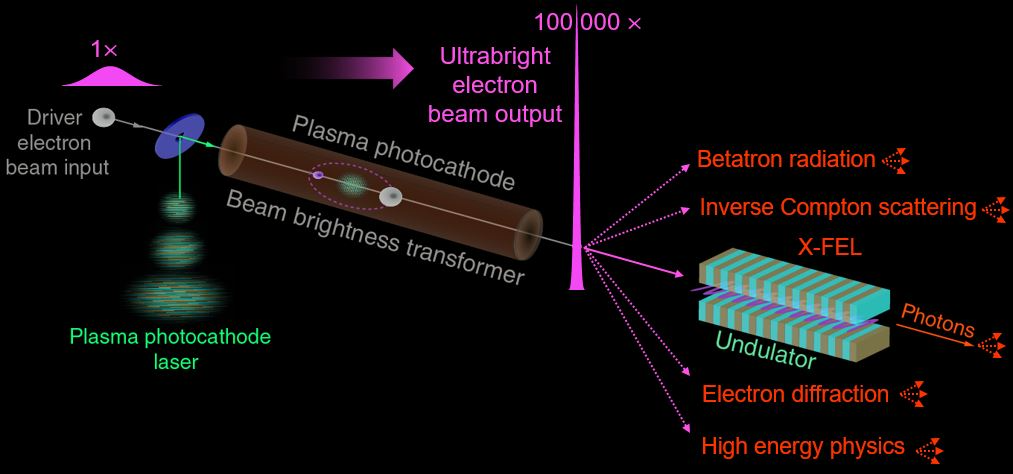Free-Electron-Lasers
FEL's are engines of discovery: intense electron beams are bent on undulating trajectories, causing them to emit radiation and produce short and bright x-ray laser flashes. These flashes allow imaging of the ultrafast and utrasmall. The quality of the electron beam that powers the FEL is crucial: it has to have high energy (GeV-scale) and high brightness in order to allow x-ray lasers to be realized. State-of-the-art X-FEL's realize such electron beams masterfully by acceleration in kilometre-long linear accelerators, followed by 100's of metres long alternating magnetic undulator sections. Only few countries can afford such enormous systems, examples are the Linac Coherent Light Source at Stanford in the US, or the European XFEL in Germany.

Plasma photocathode wakefield accelerators
Plasma wakefield accelerators (PWFA) can accelerate electrons at a 1000x stronger rate than conventional machines and in turn shrink the size of the accelerator from kilometre to centimetre-scale, thanks to multi-gigaelectron-volt electric wakefields plasmas can sustain. Plasma photocathodes may allow tunable production of clean electron beams up to 100,000x brighter and 100x shorter than state-of-the-art. Ultrabright, ultrashort electron pulses beget ultrabright, ultrashort x-ray laser pulses, in undulator sections 10x shorter than state-of-the art. With these, users could make snapshots and movies of molecular structures and possibly even of electronic motion inside atoms on their natural timescale. Capabilities of x-ray laser science, as well as capacities would be boosted by small, decentralized, plasma photocathode wakefield-based accelerators and x-ray sources.
Jointly, one step at a time
But we're not there yet. The physics principles are sound, and first proof-of-concept experiments that have demonstrated the plasma photocathode principle lend confidence in the reach of the idea. The linear structure of X-FEL's, consisting of electron photogun, accelerator, compressor, beam transport and undulator is mirrored, and at the same time condensed, in our vision of plasma-based X-FEL's. Sequential solution of key challenges is attempted in this project, bringing together plasma wakefield, photocathode, beam transport and X-FEL experts from world-leading teams. The interdiscplinarity of work in the physical sciences, engineering and technological facilities is complemented by the interdiscplinarity of potential impact on natural, material and life science.
CLARA, the Compact Linear Accelerator for Research and Applications
at Daresbury Laboratory in the UK, and the FACET-II and LCLS linacs at SLAC National Laboratory in the US are the focus of this project. The electron beam from the linac drives the plasma wave, and the plasma photocathode produces a new electron beam inside this plasma wave. This beam "witnesses" the huge accelerating and focusing fields of the plasma wave as a key ingredient for the production of ultrahigh brightness electron beams. The system acts as energy and brightness transformer: While the plasma photogun controls the witness beam production, the driver beam determines the acceleration process. CLARA and FACET-II have complementary driver current and energy ranges, which allows exploration of the plasma photocathode process in a wide parameter range.
Start-to-end simulations
We use particle-in-cell simulations to explore the plasma wakefield accelerator stage and the plasma photocathode, taking into account realistic variations of incoming beams from the linac and laser system. Extraction of the produced ultrahigh brightness beams, beam separation and transport is then simulated in the next stage. Finally, x-ray flash generation in the undulator is modelled, thus concluding the start-to-end simulation chain. These simulations are used to guide and analyze experiments, and in turn will crucially help develop increasingly advanced experimental designs, including mitigation and management of realistic jitter sources.
Boosting capabilities and capacities
While here we focus on linac-driven electron beam brightness transformers, hybrid LWFA→PWFA systems offer additional, compact and complementary solutions. Jointly, the use of high rep-rate linacs and laser systems will boost photon science capabilities by offering 5th generation light sources based on electron beams from plasma photocathodes, and they will also transform capacities by offering lab-scale systems with brightness orders of magnitude better than state-of-the-art, thus 'democratizing' this field.
Gallery
_______
Contact
Get in touch if you are interested to contribute.



